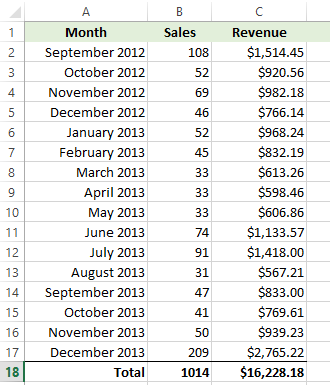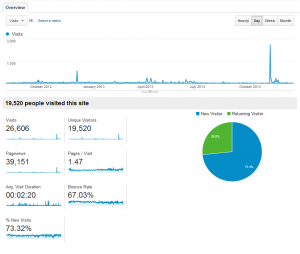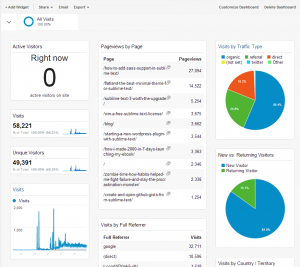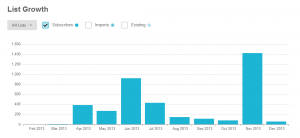$16,228 earned, 1014 copies sold: Lessons learned from a year as a self-published author
A little more than a year ago, every dollar I earned meant minutes worked for someone else. I was trading my time for income, and the only way to make more was to take on consulting projects.
But that all changed one day when I stumbled on a post by Jarrod Drysdale, a graphic designer whose self-published ebook made $30,000 in two months.
Was his success a fluke? Or might I be able to do something similar?
Then I started hearing more success stories: First it was Nathan Barry, who earned $12,000 with his launch of The App Design Handbook, then proceeded to crush that figure with successful launch after successful launch.
And there was Pat Flynn, who made hundreds of thousands of dollars helping people study for the LEED architectural exam.
These guys weren’t well known — they were desk jockeys like me, two freelance graphic designers and an unemployed architect.
Their only assets were a set of professional skills and a willingness to teach others.
I realized that, as a software developer, I also had a coveted skill set. Maybe I could follow in their footsteps and enjoy the same success.
I didn’t have an audience, other than a few hundred Twitter followers and a handful of daily visitors to a few ill-maintained blogs.
But I’d glimpsed what was possible, and one evening, I started writing an ebook about my favorite coding tool, Sublime Text.
I’m glad I did. Since I pushed the Publish button last fall, my ebook, Sublime Productivity, has brought in more than $16,000 in royalties and earned me an audience that I can continue to serve with more products.
And in the process, I’ve learned some valuable lessons that will allow me to replicate this success in the future.
In this post, I’d like to share some of the specifics of my success, as well as a few of the lessons I’ve learned in the hope that I’ll inspire you to take the next step on that ebook or screencast you’re considering.
By the numbers
When I was starting out, the numbers shared by Jarrod, Nathan and Pat helped motivate me, so in the spirit of paying it forward, let’s take a look at my sales and the growth of my audience.
Earnings
Here’s how my month-to-month earnings have stacked up:
My launch last September wasn’t a Nathan Barry-sized home run. I didn’t know what I was doing, and I didn’t put in nearly as much work as he does. I was also launching a beta version of my book rather than a finished product.
Still, I was pleased with the results. I’ve written previously about my launch, but to summarize, I launched with a list of only 157 potential buyers and supplemented this megre reach by recruiting the help of others with larger audiences like Peter Cooper. I also offered a limited-time discount as an incentive to buy.
During launch week, I netted 136 sales and $2,000 in income.
I was excited but also afraid: Was that it? I’d heard that ebooks tend to make most of their earnings during the launch. Would this book be a good source of extra income for me, or had it run its course?
The next several months proved that I could generate steady income with the book if I put in consistent effort to promote it. When the launch-week excitement faded, sales tapered off, then held steady around 5 to 7 per week for several months.
But in early June 2013, they suddenly fell off a cliff. I didn’t sell any copies for 5 days. Then I sold a few copies, and had another dry spell of 3 days, and another of four days.
I was panicking: What happened? What did I break?
I’m still not sure what caused those lulls. A little online research revealed that June is often a bad month for online sales, as summer is starting in the U.S. and many people take vacations.
But things looked grim at the time. When the Sublime Text 3 public beta came out on June 28, I jumped on the opportunity and immediately put the book on sale for a week. To my surprise, the spike in sales nearly matched my launch numbers, and June ended up being a great month.
Several smaller contests and giveaways helped generate above-average sales in September and October and had the added benefit of growing my mailing list in preparation for a big Cyber Monday sale.
A little over a year after I first published my book, my 2013 Cyber Monday sale surpassed my most optimistic estimates. All told, it generated $2,025 in income from 167 sales, breaking in three days the sales record I set during my launch week.
Audience
These sales numbers didn’t just happen naturally — they’re the direct result of growth in my audience.
When I started writing my ebook, I had no audience to speak of. My only asset was a few hundred hits a week on a blog post I’d written about Sublime Text. Over the next several months, I focused on extending my reach in three main channels.
Web traffic
Shortly before my launch, I set up a Sublime-focused blog and started posting tips and how-to articles.
I’ve also posted some Sublime-related articles on a personal blog, which now generates more traffic than the Sublime tips blog:
These are pretty anemic numbers, really. After an initial burst of posts, I haven’t invested as much time in these sites as I could have, and the results are plain.
Still, I get a steady stream of subscribers to my mailing list who mention these sites, and I know I’d see a nice uptick in sales if I devoted more time to blogging on them.
Social media
Let’s get this straight up front: Twitter is horrible for selling things. And yet I’ve invested a lot of time in Twitter and have seen a solid return on my time. (More on this shortly.)
In early August 2012, I created a Twitter account to help market the ebook I was writing. Using a combination of automation tools, I grew this account to 520 followers by launch day, and by the following spring, it had more than 6,000 followers:
In April, Twitter changed its terms of service, banning some of the automation tools I’d been using.
But I continued to grow the account by sending out hand-picked tweets of interest to Sublime fans, and since this spring I’ve averaged about 100 new followers per week, for a total of 3,400 additional followers:
Mailing list
I didn’t start a mailing list until early in 2013, but once I saw how effective email is, I shifted all of my promotional efforts to growing my list.
My subscriber count has grown in fits and starts:
The big spikes are from several contests I ran, including a couple of Sublime license giveaways that together generated more than 2,000 subscribers.
Lessons learned
This last year has been a marketing crash course, and while I’ve had some bumps and bruises, I’ve also learned some valuable lessons about selling on the Internet.
Here are five of my biggest takeaways.
Price by value, not competition.
Everyone knows that $9.99 is the “best” price for an ebook, so I took some flak early on for setting the minimum price for my book at $19.
It was a hard decision to make, but I firmly believe it was the right one. The book’s audience is software developers, a group of professionals who might earn $100, $150 or even $250 an hour. At those rates, minutes saved on routine tasks are money in the bank for my customers.
This has been validated repeatedly by buyers. The software I use to create and sell my book, Leanpub, allows buyers to voluntarily pay more than the cover price if they want to. My sales page specifies a minimum price of $19 but allows buyers to pay more if they choose to, and 38% of buyers pay more than the minimum, accounting for 47% of the book’s total revenue. One buyer shocked me by ponying up $50 for the book (thank you)!
Pricing high also gives me room to occasionally offer discounts, always with a short time limit, to help convince fence-sitters to buy.
Email is king.
It’s hard to overstate the importance and effectiveness of email as a tool for selling a product.
When I launched my book, all I had was a list of 157 people to email, but of those, more than 20% bought a copy.
And during my recent Cyber Monday sale, I was able to compare Twitter and my mailing list head to head. I sent out different discount codes to my mailing list, which had around 4,800 subscribers, and to my Twitter audience, which numbered around 9,300 at the time.
The result? The mailing list generated 1100% more sales than Twitter. Nearly 10,000 Twitter followers netted only 13 sales.
It’s because of my mailing list that I was able to beat my launch week sales figures with my Cyber Monday sale just by sending three emails.
Build a funnel.
If Twitter followers don’t convert well into customers, why do I still devote a lot of my marketing time and energy to Twitter?
Twitter has proven to be a good starting place for my marketing funnel. It’s a great place to meet and learn about your audience, and to introduce yourself to them. It’s a low-cost way for me to get myself out there where other potential customers can encounter me.
And while it’s hard to convert Twitter followers to customers, it’s pretty easy to convert them to mailing list subscribers.
My main objective with both my Twitter account and my websites is to direct people to my mailing list, where I can stay in touch with them over time and, hopefully, eventually convert them to customers.
Good things happen when you have something for sale.
Over the summer, I got discouraged when my sales flatlined. Nothing I did seemed to move the needle.
But I kept at it, and eventually things started to shift. In the last several months, three opportunities came up seemingly from nowhere that have helped me sell more books. First, TradePub approached me about promoting my book as a giveaway on their site.
Second, Jesse Liberty, a blogger I’ve followed through my programming career, praised my book on his blog and gave it a nod in his Sublime Text PluralSight course.
And fellow Leanpub author Azat Mardanov asked me if I’d like to bundle my book with his Rapid Prototyping with JS.
When you consistently invest time in promoting a product, you never know when you’ll get a break.
Start small.
My biggest mistake with this book was overreaching. I set out to write the definitive book on Sublime Text, but I’ve since learned what a tall order that actually is. Sublime adds new features with each beta release, and dozens of new plugins come out every week.
By contrast, my time is pretty limited: I have a full time job and a wife and two kids and can only devote a few hours a week to book-related activities.
My plan to address this problem is to do what I should have done at the outset: Breaking the book up into smaller pieces that I can focus on and check off as completed.
Next steps …
My experience selling my book has left me hungry to try again. I’m finishing another Sublime-related book that I’ll be shipping in the next month or two, and I plan to start another after that.





